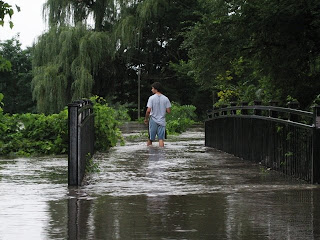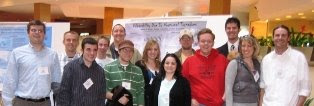
According to the results, flood deaths in the U.S. are spatially distributed across all states with unique, high-frequency fatality “hot spots” found in various regions including south-central Texas, the Ohio River Valley, and along the I-95 corridor in the Northeast. Of the three types of floods examined in the study -- flash floods, river floods, and tropical system floods -- flash floods were responsible for the majority of the flood deaths from 1959-2005. This is likely due to the rapid-onset nature and the inability, at times, to issue a timely warning.
The report illustrates that the number one killer activity, or victim circumstance, surrounding flood related deaths were vehicular related. In many instances, these vehicle-related deaths occurred because the victim drove willingly into flood waters by ignoring either barricades or law officers. This lack of judgment is highly associated with a person’s perception of the dangers associated with flood waters and further investigation into these perceptions is imperative.
 An NIU student willingly walking into Kishwaukee River flood waters flowing through the east campus lagoons during August 2007's flood.
An NIU student willingly walking into Kishwaukee River flood waters flowing through the east campus lagoons during August 2007's flood.The study reveals unique age-specific vulnerability patterns as well, with results suggesting that people between the ages of 10-29 and over 60 years of age are more vulnerable to floods. An interesting finding related to these demographic data is that many children, especially those younger than six years old, perish in flood events when they are driven into the flood waters by either a parent or guardian. Moreover, young children are likely to drown in a flood when playing in flooded creeks and streams. Additionally, males are more likely to perish in flooding events than females.
Results from this study contribute an important step in understanding the circumstances surrounding floods casualties in the U.S. The research findings indicate the need for more intensive flood safety education program in order to reduce the hazards related to flood events in the U.S. Finally, this work illustrates how NIU Meteorology is not only focusing on the forecasting aspects of weather perils, but is – through faculty teaching and research efforts – concentrating on understanding the integration of physical risk and social vulnerabilities that culminate in producing weather disasters. Through these efforts, our students have the opportunity to 1) understand the physical and dynamical mechanisms leading to weather perils such as floods and 2) comprehend and appreciate how human vulnerability plays an important role in creating disasters associated with these perils. Ultimately, our students (and future alumni!) are armed with the information required to mitigate these complex hazards in the future.


